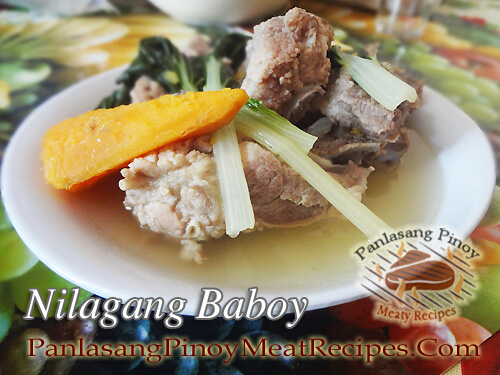How To Cook Nilagang Baboy (Boiled Pork Ribs)
Nilagang baboy or boiled pork ribs or pork belly with vegetables is a very simple Filipino soup dish.
Servings: 6 servings
Calories: 258kcal
Ingredients
- 1 kilo pork ribs or pork belly
- 1 bundle pechay
- 2 pcs sweet potatoes peeled and quartered
- 1/2 head cabbage quartered
- 1 medium size onion quartered
- 1 Tbsp. fish sauce or patis
- 1 Tbsp black peppercorns cracked
- 1/2 tsp. salt
- 2 liters water
Instructions
How to Cook Nilagang Baboy
- Remove the skin of the pork ribs or pork belly. Then slice it into 3/4 inch thick and 1 and 1/2 to 2 inch length.
- Fill a medium size pot with water and let boil. Then put the pork and boil until the scum floats.
- Remove the scum that rises above the broth and add more water if needed.
- Add in the onion and black pepper then cook for an hour or until the meat is tender.
- Add in the sweet potatoes, salt and patis and cook for another 5 minutes.
- Then add cabbage and pechay and simmer for half a minute. Adjust the taste if necessary by adding more salt.
- Remove from heat and serve hot.
